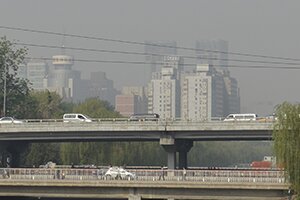 The World Environment News reported on an agreement regarding joint efforts to cut carbon output between China and the United States. They agreed to five initiatives to cut carbon output from the largest sources, including heavy duty vehicles, manufacturing and coal-fired plants.
The World Environment News reported on an agreement regarding joint efforts to cut carbon output between China and the United States. They agreed to five initiatives to cut carbon output from the largest sources, including heavy duty vehicles, manufacturing and coal-fired plants.
China and the United States are the world’s top emitters of greenhouse gases. Therefore the American-Chinese Working Group on Climate Change, implemented in April 2013, is supposed to work with industry and non-governmental groups to develop plans “to carry out the measures aimed at fighting climate change and cutting pollution”[1] until autumn this year.
In order to reduce emissions, the initiative focuses on five pillars:[2]
- Reducing emissions from heavy-duty and other vehicles
- Increasing energy efficiency in buildings, industry, and transport
- Improving greenhouse gas data collection and management
- Increasing carbon capture, utilization, and storage (CCUS)
- Promoting smart grids
China, one of the most rapidly growing countries in the world, has been experiencing strong growth of its economy and motorized mobility over the last decades. Transport related energy consumption and pollution problems are poised to soar further. In 2008, consumption of fossil fuels in the transport sector accounted for 36% of national total fossil fuel consumption. The joint US-China working group is focusing, among others, on improving greenhouse gas data collection. The recognition of the high priority of comprehensive, accurate reporting of economy-wide greenhouse gas emissions data to track progress in reducing emissions within this initiative can be seen as a promising start.
A full GIZ-report on “Data Availability for Measuring and Reporting Transport related Greenhouse Gas Emissions in Chinese Cities” can be downloaded here.
The report was developed by the Institute of Comprehensive Transportation (ICT) on behalf of the Low Carbon Transport Development Component of the Sino-German Climate Change Programme,
Further information on the Sino-American working group can be found here.


